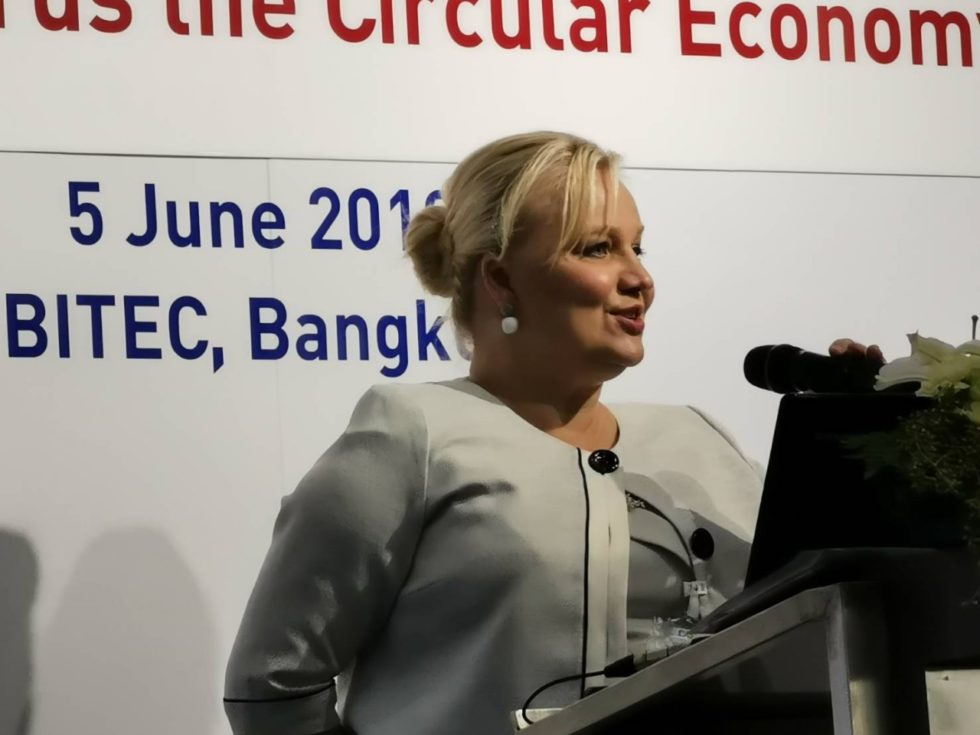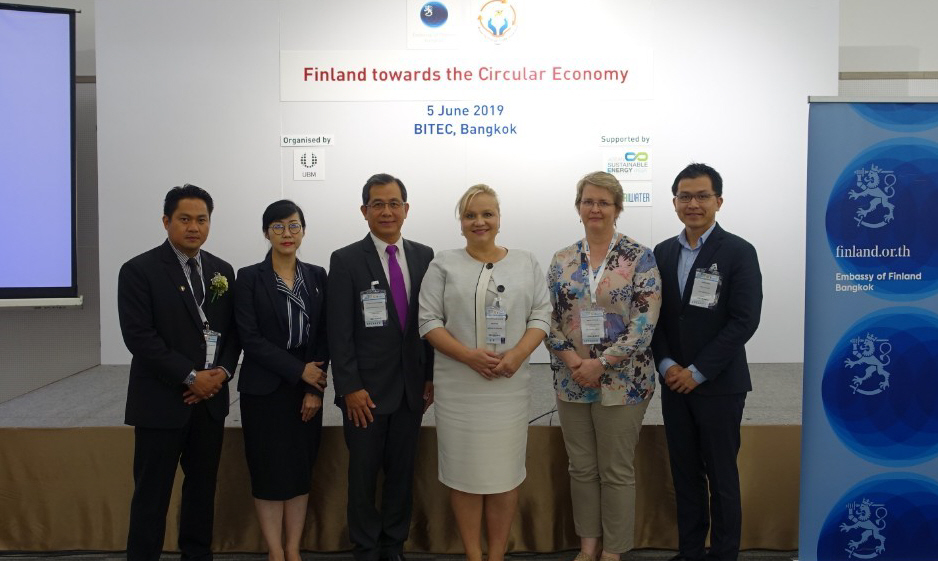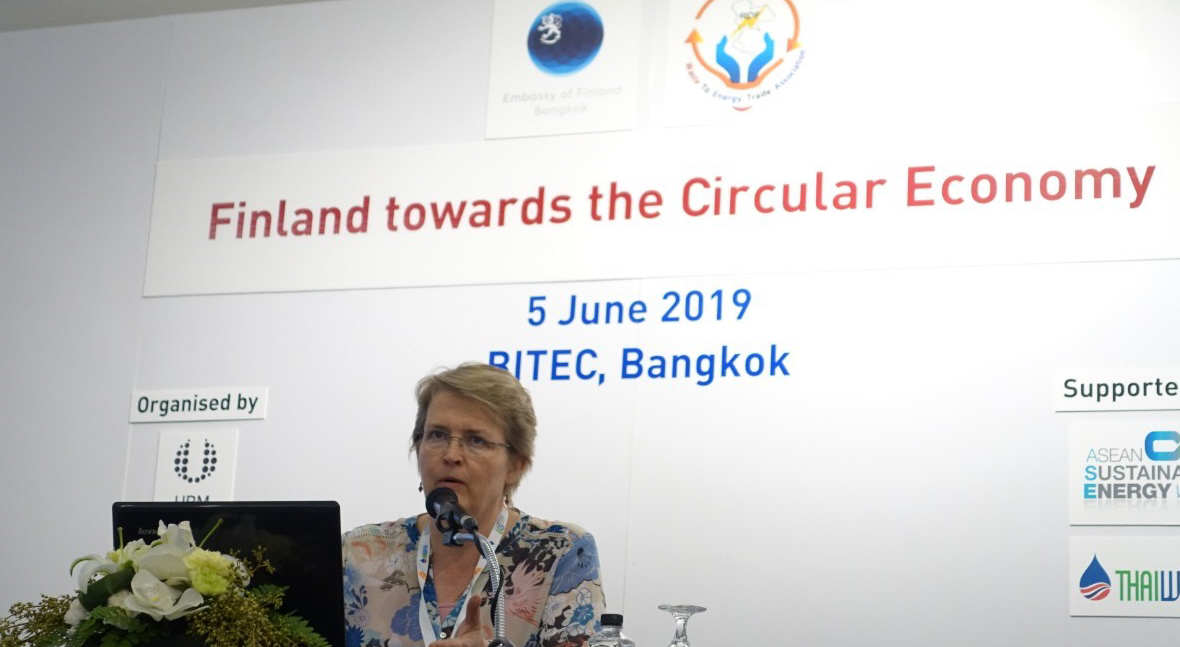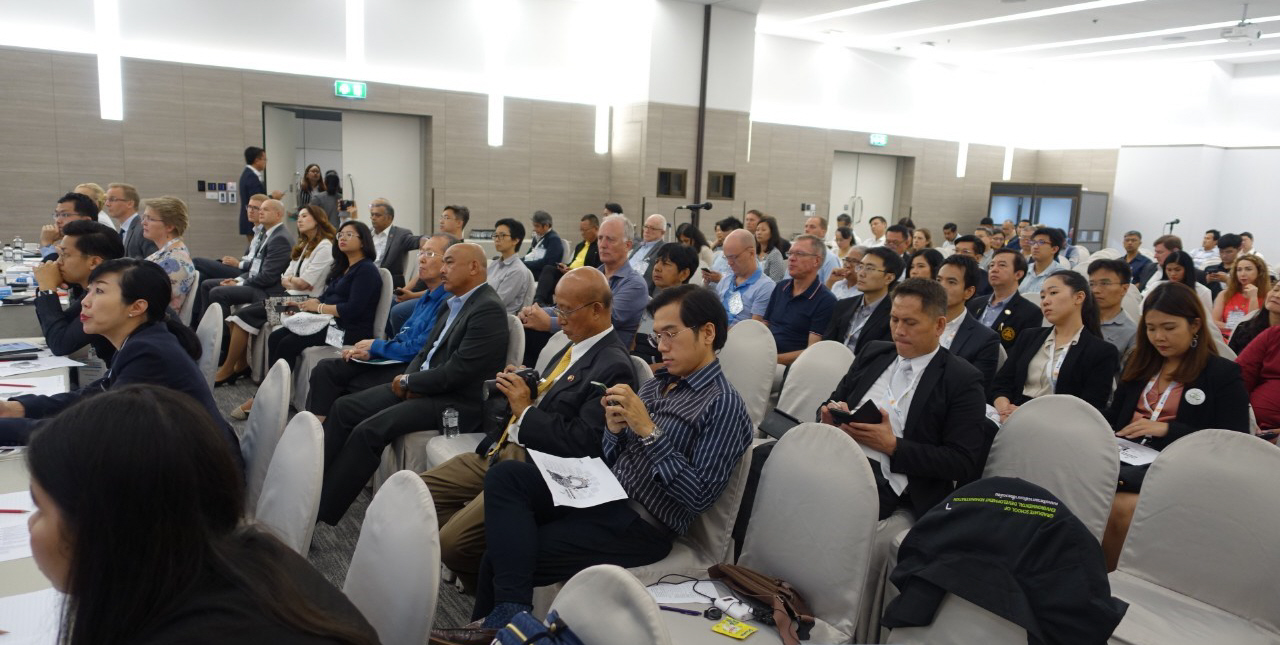While the World Circular Economy Forum (WCEF) was taking place in Helsinki the Embassy of Finland Bangkok co-organised ‘Finland towards the circular economy’ seminar, held at the Asean Sustainable Energy Week 2019 in Bangkok.
This gave Finland a perfect opportunity to showcase Finnish solutions and present the country’s ambition and roadmap towards being a global leader in Circular Economy (CE). Thailand representatives also outlined its status in the country and various efforts within waste management and waste to energy.

HE Satu Suikkari-Kleven, Finland’s ambassador, gave a brief account of the key messages from the WCEF, one being that the scientists are screaming about the world’s growth pattern as being unsustainable.
“When you look at the figures that raw materials use will more than double by 2060 it kind of paints a quite alarming picture but at the same time the atmosphere at the seminar was extremely positive.”
WCEF is living proof that circular economy is not just a vision for the future, it’s very much reality today. More than 2000 people from all over the world gathered there together, presenting their different solutions, be they the strategies adopted by governments or new technologies developed by private companies,” continued the ambassador.
The CE, with its solutions and hopeful spirit, is really they key to solve so many of our global problems, she stated.
“For Finland CE is a tool for achieving sustainable development, battling climate change, saving natural resources and improving the state of the environment, all the while generating growth and jobs.”

The potential effect on Finland’s economy also speaks volumes: according to estimates the CE can contribute an annual added value of at least 3 billion Euros to the Finnish economy by 2030. Additionally CE offers lower income entrepreneurs improved business opportunities, as waste and left-over materials can be used to establish new construction sector business operations.
“CE also has great potential of promoting equality and fairness by making many services and commodities available to those who previously could not afford them. When there is no need to purchase goods for yourself there is no need for initial investment and various commodities can be enjoyed, because circular economy is a new economic model in which consumption is based on using services, sharing, renting, recycling etc.,” said Satu and continued: “The re-distribution of global wealth is an extremely important global goal requires a circular economy.”
Summarising the good reasons for transformation into circular economy the ambassador emphasized that environmental sustainability, e.g. sustainable use of resources, is an “extremely important thing”.
The first EC roadmap in the world was created under the Finnish innovation fund SITRA in 2016.
The measures that then followed started to define the steps and that steering the national economy towards CE would require a systemic change, Satu explained.
“Our target is to be global leader in the CE and we want to be the global leader by promoting the interests of three fields: economy, society and the environment.”
The roadmap takes a multi-stakeholder approach to find complete solutions and has four priorities at this point: 1) Sustainable food systems 2) Transports and logistics 3) Technical loops 4) Forest-based loops, and actions intersecting the whole of society.
“And it has more than 60 concrete projects or administrative measures to be taken, so it’s more than a policy declaration – it provides very concrete proposals to follow.“
Taking a closer look at one of the focus areas, the forest-based loops and bio-economy, Ambassador Satu highlighted that Finland is the most forested country in the EU and that its forest industry is one of the economic backbones.
“Finland has world class expertise, vast renewable natural resources and the industrial infrastructure needed to develop a sustainable bio-economy. An entire wood-based eco-system has emerged with totally new or re-invented products. These include: advanced bio fuels, biodegradable packaging materials, construction materials, cosmetics, fashion fabrics, and healthcare instruments. Everything that is made out of oil today can be made out of wood tomorrow. And we in Finland are already doing it!”

The ambassador also mentioned some concrete examples of excellent innovations from Finland, while some Finnish companies also presented their solutions during the seminar, among them BMH Techonlogy Oy, represented by Ms. Minna Vilkuna.
She spoke about Refuse-derived fuel (RDF), a fuel produced from various types of waste such as municipal solid waste (MSW), industrial waste or commercial waste.
Minna spoke about how technology helps in the work towards CE, and how to find solutions, especially energy solutions, that are sustainable (being profitable and environmentally friendly at the same time).
“When there is for example food-based industry, mechanical wood industry such as sawmill, or if there is a chemical forestry industry, like paper and pulp mills – all that waste from that forestry industry our BMH has technology for.”
Another well-established player in Southeast Asia is RE Power Group, from which MD Gustaf Godenhielm spoke about ‘Biogas as the cornerstone of a circular economy’. And from Ductor Mr Gavin Shen presented his ‘The Revolutionary Value Creation Model through Organic Circularity’.
Gavin highlighted the challenge with wasted waste. Out of all the waste the world is producing world are generating a large portion originates from animals.

Ductor firmly believes that biogas is one of the options that will form part of the future sustainable energy mix, moving away from this tradition of linear economy.
By adding a pre-treatment process to a normal biogas production Ductor breaks the waste down into components and reorganise those components into useful forms that can optimise the energy from the waste as well as producing additional fertilizer to boost food production, Gavin explained.
